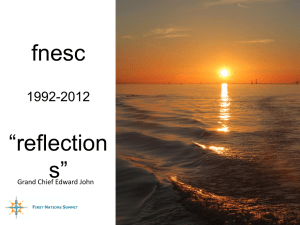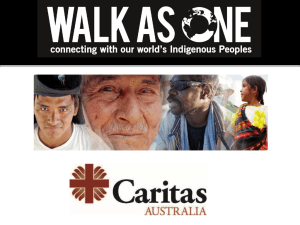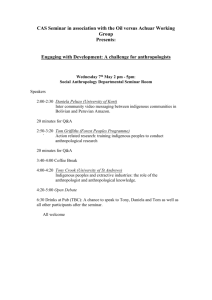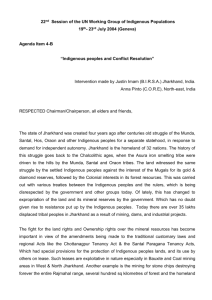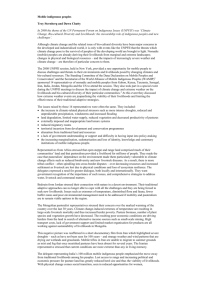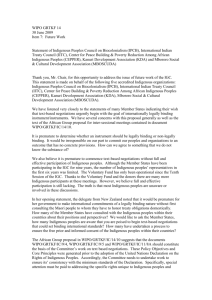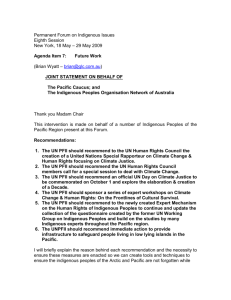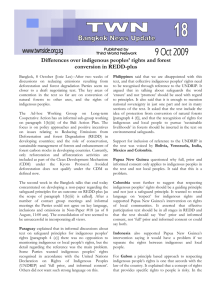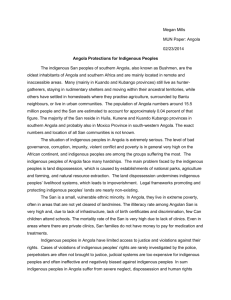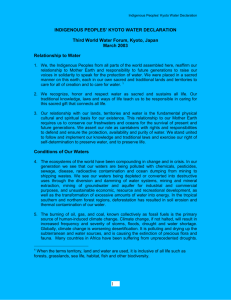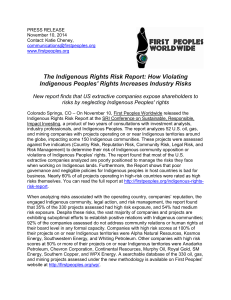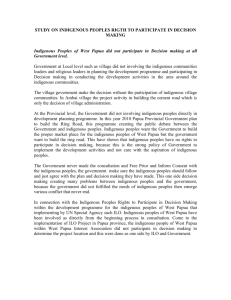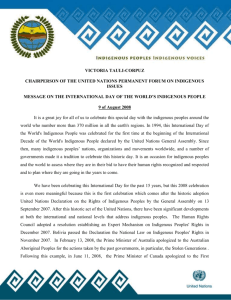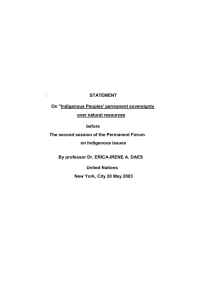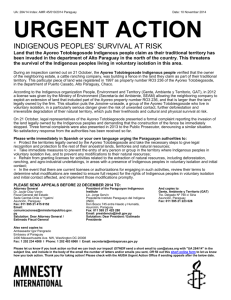Haigo Hane` January 20, 2016 Tuba City High School Pavilion A
advertisement
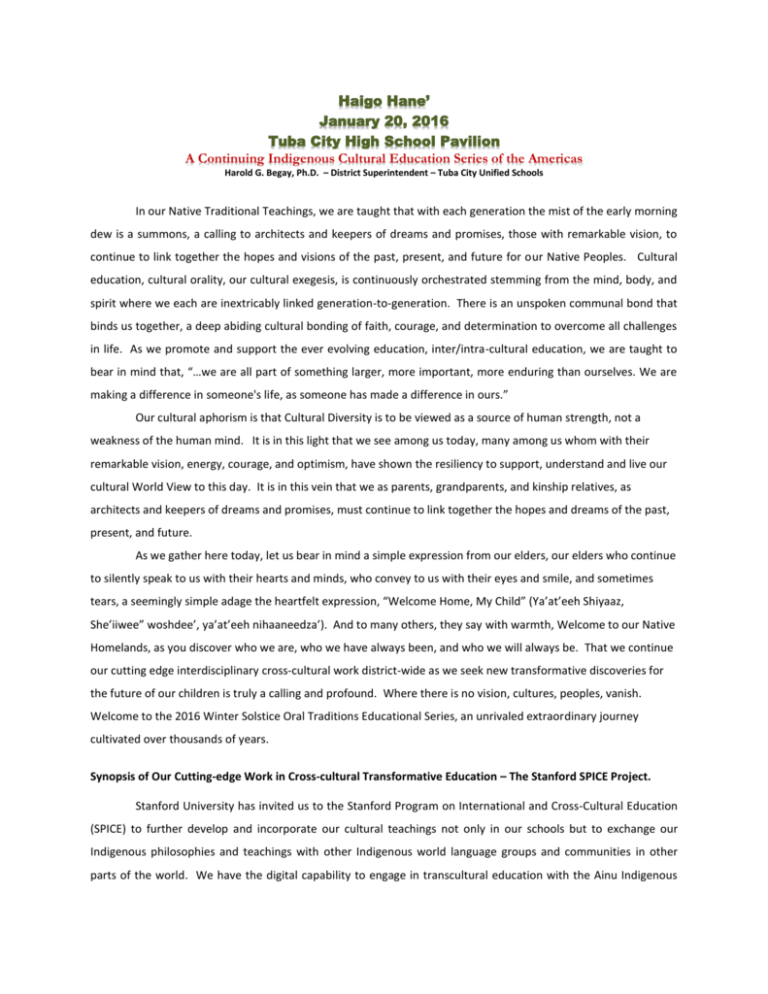
Haigo Hane’ January 20, 2016 Tuba City High School Pavilion A Continuing Indigenous Cultural Education Series of the Americas Harold G. Begay, Ph.D. – District Superintendent – Tuba City Unified Schools In our Native Traditional Teachings, we are taught that with each generation the mist of the early morning dew is a summons, a calling to architects and keepers of dreams and promises, those with remarkable vision, to continue to link together the hopes and visions of the past, present, and future for our Native Peoples. Cultural education, cultural orality, our cultural exegesis, is continuously orchestrated stemming from the mind, body, and spirit where we each are inextricably linked generation-to-generation. There is an unspoken communal bond that binds us together, a deep abiding cultural bonding of faith, courage, and determination to overcome all challenges in life. As we promote and support the ever evolving education, inter/intra-cultural education, we are taught to bear in mind that, “…we are all part of something larger, more important, more enduring than ourselves. We are making a difference in someone's life, as someone has made a difference in ours.” Our cultural aphorism is that Cultural Diversity is to be viewed as a source of human strength, not a weakness of the human mind. It is in this light that we see among us today, many among us whom with their remarkable vision, energy, courage, and optimism, have shown the resiliency to support, understand and live our cultural World View to this day. It is in this vein that we as parents, grandparents, and kinship relatives, as architects and keepers of dreams and promises, must continue to link together the hopes and dreams of the past, present, and future. As we gather here today, let us bear in mind a simple expression from our elders, our elders who continue to silently speak to us with their hearts and minds, who convey to us with their eyes and smile, and sometimes tears, a seemingly simple adage the heartfelt expression, “Welcome Home, My Child” (Ya’at’eeh Shiyaaz, She’iiwee” woshdee’, ya’at’eeh nihaaneedza’). And to many others, they say with warmth, Welcome to our Native Homelands, as you discover who we are, who we have always been, and who we will always be. That we continue our cutting edge interdisciplinary cross-cultural work district-wide as we seek new transformative discoveries for the future of our children is truly a calling and profound. Where there is no vision, cultures, peoples, vanish. Welcome to the 2016 Winter Solstice Oral Traditions Educational Series, an unrivaled extraordinary journey cultivated over thousands of years. Synopsis of Our Cutting-edge Work in Cross-cultural Transformative Education – The Stanford SPICE Project. Stanford University has invited us to the Stanford Program on International and Cross-Cultural Education (SPICE) to further develop and incorporate our cultural teachings not only in our schools but to exchange our Indigenous philosophies and teachings with other Indigenous world language groups and communities in other parts of the world. We have the digital capability to engage in transcultural education with the Ainu Indigenous Peoples of Japan, the Quechan Indigenous Peoples of Peru and Bolivia and other Native Peoples in other parts of the world. With transcultural education, our students and staff will be able to gain awareness of the challenges, successes, and hopes of other Indigenous world communities. The mission of SPICE is to build, “… a bridge between Stanford University and K–12 schools and community colleges by developing multidisciplinary curricular materials on international topics, conducting teacher professional development seminars, and teaching distancelearning courses.” Our cutting-edge work in cross-cultural transformative education consists of our TCUSD Dine’ and Hopi Language and Cultural Studies program. Our work in this area is fundamentally a culture-friendly learning redesign and initiative intended to empower our students so that they will have the applied knowledge base critical to a meaningful education and a quality life. We believe that by reaching out to the local community to embrace community cultural values and wisdom, our Indigenous Heritage Language and Cultural studies revamp will promote harmonious concordant educational growth. Our Native Studies revamp is intended to broaden the current educational programs in our district so that our students will enjoy a more inclusive educational menu for a meaningful education for our Native Peoples. Our Native Studies revamp and our Cultural Winter Oral Traditions Series are intended to heighten our awareness of our core traditional Indigenous Native community values and wisdom as a means to empower, promote and revitalize healthy human growth and development. The centerpiece of our education system then is to cultivate and have in place the T’aa Dine’ Bo’O’oo’aah Bindii’a’, or the Dine’ Philosophy of Teaching and Learning, and the Hopi Lavayi Language & Cultural program, which serves not only as a cultural lighthouse but as critical teaching and learning resources to promote high quality rigorous teaching and deep learning. Substantial evidence suggests that Native students grounded in their own traditions are far more resilient and are likely to succeed in education and in life endeavors (Roessel, R. nd ). We strongly believe and take the position that a school with an essentialized identity of this form will embrace and value the “various rites, rituals, celebrations, life-style and allocated tasks” of the community children and students, in the process shaping “the child’s personality and [making] it feel secure within its cultural setting” ( Bapat & Karandikar, 1998, p. 8 & 9.). Our cultural program goal, design and strategy then is to transform cultural education that will allow a child to “know who it is, what it is expected to do, in what way, and how to relate itself to the kinship structure and the neighborhood.” (ibid, p. 9) A school of this nature and form welcomes a child to learn “a tremendous amount about nature and develops emotional bonds with its different seasonal manifestations. All this knowledge, gathered at first hand, infuses self-confidence in the child and forms its cultural identity.” (ibid, p. 9). We believe that our Dine’ and Hopi Cultural Education revamp in this form will insure cultivation of a sound sense of self-efficacy critical to acquiring the very best world education for the Good Life.







